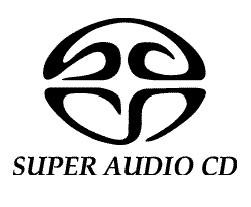

|
It was February 1983. Twenty two years ago. Sony began selling the first commercially available CD player, the CDP-101. In the US the selling price was $900. Sony had 16 CD titles available to sell. The very first CD manufactured was a Billy Joel. Today, the CD is the predominate form of music distribution. Billions of CD players are used around the world and tens of billions are CD music discs have been manufactured. The CD was the first digital consumer product. Now there are digital video discs, DVDs, digital satellite radio and digital satellite TV. And now there is digital High Definition Television. But, in the early 1980's while the CD technology was being finalized for its introduction, digital technology was archaic compared to today. The IBM computer had just been introduced and the Apple Macintosh with 128k of memory and a floppy drive was still a year away. Digital technology has come a long, long way since the Compact Discs introduction. In fact, the PCM, pulse code modulation technology used by the CD was first used in World War II. Sony Music alone, has several hundred thousand master tapes. These are all getting old, the acetate deteriorating. Even some of the best rock and roll masters are approaching 40 years old. Sony needed and engineers wanted a new archival system to save these tapes. Whether the vinyl record or CD sounded better than the other or vice versa, recording engineers know that neither sounds identical to the original music recorded on the master tapes. While PCM digital recordings, even the new high big, higher sampling digital masters sound wonderful, most recording engineers still prefer and think old fashioned reel to reel recorders, operating at 30 ips, is the ultimate sound recording machine. Keep in mind cassettes operate at 1 7/8 ips. Analog 30 ips half inch recordings have a frequency response to 100kHz, a signal to noise ratio of 100 db and ultra low distortion. With the new millennium approaching and the CD soon going to be two decades old, Sony set out to develop a new recording system to make perfect, no compromise copies of those aging master tapes and capture every nuance of a 30 ips master tape to be heard by the audiophile consumer. What they developed is called Direct Stream Digital, and a new type of CD, called the Super Audio CD to play these on. Shown below, is the world's first Super Audio CD player. It was introduced in 1998 at a price of $5000. Audio critics hailed the sonic achievement of this machine and the DSD recordings. The Sony SCD-1 was shown on the cover of Hi-Fi magazines around the world. The standard CD works by taking the audio signal and chopping it up 44,100 times per second. Each of these samples is given a 16 bit digital word. The Super Audio CD samples the music 2 million 822 thousand times per second. Instead of the PCM system used in current digital audio systems a Delta signal, Direct Stream digital system developed by Sony and Phillips is used. The digital stream can be recorded on a computer hard drive or a magnetic tape. Almost no signal processing, no dither, no quantitization like regular CD is used. The music is sampled, recorded, and and a final output filter utilized, and you have music. The sound is pure and full of depth. There is a |
clarity. Listen to a crash of a cymbal. There is a metallic tingle without harshness and veil. The human voice is uncannily real, and even the the old digital system should be able to reproduce accurately low frequencies, bass is just more solid, more transient and more lifelike on the Super Audio CD. Most Super Audio CDs are hybrids. This means they are two layers. Place one of these dual layer discs in a standard CD player and it plays just and sounds just like a standard CD. The laser reads the CD layers just as a regular CD. Place it in a SACD players and the sound comes alive. Plus, there are now multi channel Super Audio CDs and Super Audio CD players that offer full range six channels of audio. Unlike Dolby Digital 5.1 surround sound which highly compressed the digital signal and only allows a small bass bandwidth on the subwoofer channel, the SACD offers six full range out to 100Khz channels. Each channel has a frquency response from DC to 100,000Hz. Some multi channel SACDs do not use a center channel and are only 4 channel. Some use all 6 channels but the 6th channel is not a subwoofer channel, but in some cases reproduced sound recorded in a high placed microphone. Some Super Audio CD players play SACDs and CDs. Some are also DVD players. And while the SCD-1 shown was $5000, new models are play both DVDs and multi channel Super Audio CDs are available for $150. Super Audio CD is not a Sony only format. It was co developed by Sony and Phillips. There are machines from Pioneer, Yamaha, Denon, dCs, Accuphase, Phillips, Marantz, TASCAM, Luxman, Onkyo, Sony Music, Universal Records, EMI, 3 of the 4 major record companies are now releasing SACD discs. ABKO records just re-released the first 22 Rolling Stones albums on hybrid SACS, and over 4 million of these discs were sold. These re-released Stones are only available on hybrid SACD. Virtually all of the smaller, audiophile and pure music record labels are releasing discs in SACD. There are 1000 titles available on Super Audio CD.
|

The Original Super Audio CD Player... The SCD-1 $5000 Introduced in 1999